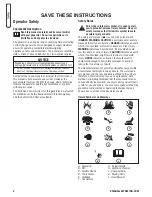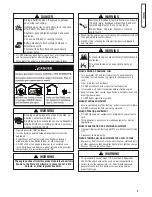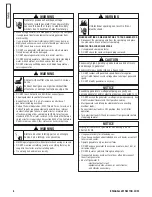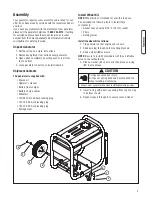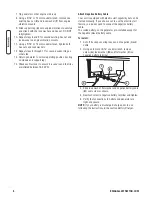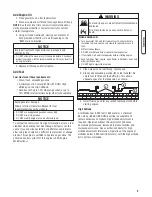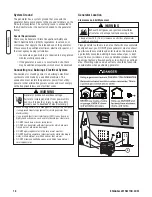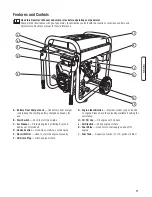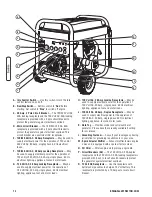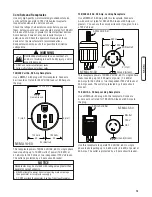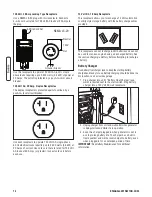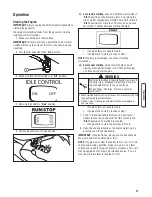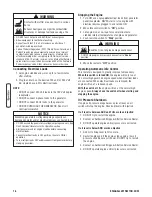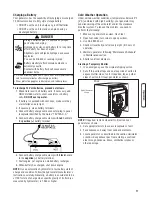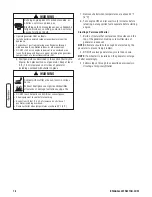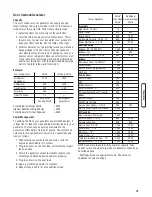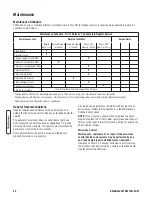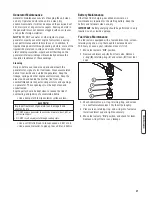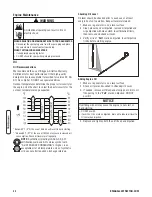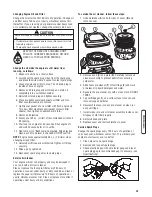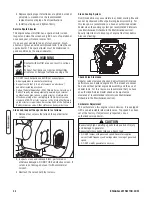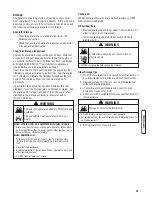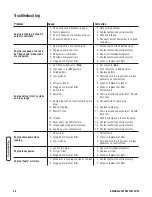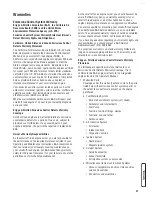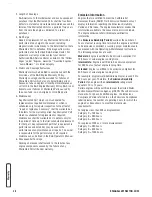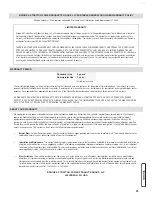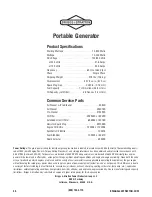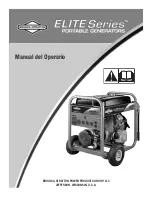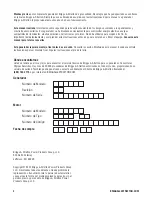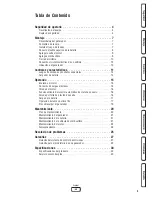
18
BRIGGSandSTRATTON.COM
6. Start generator as described in the section
Starting the
Engine
, then place carton over generator. Keep at least
5 ft. (1.5 m) clearance on all sides of generator
including overhead with shelter in place.
7. Remove shelter when temperatures are above 40°F
[4°C].
8. Turn engine OFF and let cool two (2) minutes before
refueling. Let any spilled fuel evaporate before starting
engine.
Creating a Permanent Shelter
1. Build a structure that will enclose three sides and the
top of the generator, making sure muffler side of
generator is exposed.
NOTE:
Structure should hold enough heat created by the
generator to prevent icing problem.
2. DO NOT enclose generator any more than shown.
NOTE:
If a wheel kit is installed on the generator, enlarge
shelter accordingly.
3. Follow steps 3 through 8 as described previously in
Creating a Temporary Shelter
.
WARNING
Running engine gives off carbon monoxide, an
odorless, colorless, poison gas.
Breathing carbon monoxide can cause headache,
fatigue, dizziness, vomiting, confusion, seizures,
nausea, fainting or death.
• Operate generator ONLY outdoors.
• Install a battery operated carbon monoxide alarm near the
bedrooms.
• Keep exhaust gas from entering a confined area through
windows, doors, ventilation intakes, or other openings.
• DO NOT start or run engine indoors or in an enclosed area,
(even if windows and doors are open), including the generator
compartment of a recreational vehicle (RV).
WARNING
Contact with muffler area can result in serious
burns.
Exhaust heat / gases can ignite combustibles,
structures or damage fuel tank causing a fire.
• DO NOT touch hot parts and AVOID hot exhaust gases.
• Allow equipment to cool before touching.
• Keep at least 5 feet (1.5 m) of clearance on all sides of
generator including overhead.
• Remove shelter when temperatures are above 40°F [4°C].

